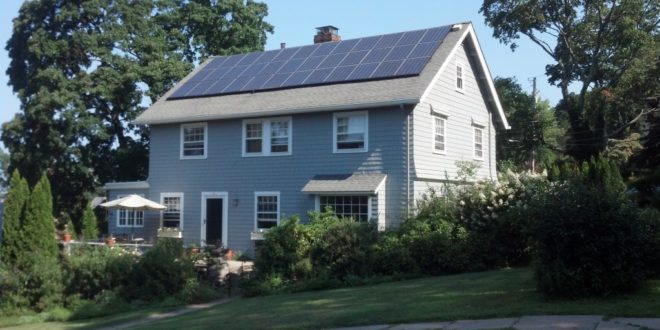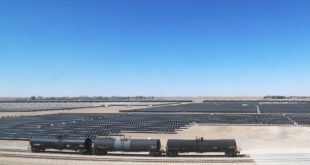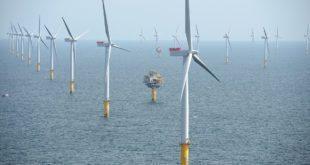
The practice of harnessing clean, renewable energy from the sun to power homes and businesses is gaining popularity as improved technology and business models are reaching consumers.
Solar energy is harnessed using photovoltaic (PV) panel systems that convert sunlight directly into electrical energy that can be used to power your home’s heating, cooling, lighting and appliances. PV panels are easily cleaned and maintained, and can last many years without the need for repair or replacement.
Until recently, solar energy has been viewed as simply a feel-good alternative. Even though awareness is spreading about the negative impact the use of traditional fossil fuels has on the environment, consumers are held back by the fear that solar energy systems are too costly to install or that their practical use is limited to certain geographic regions.
However, solar energy has actually become quite economically practical. Installation costs are falling, and are further offset by the fact that once it’s made available for use, limitless free solar energy can eliminate consumers’ utility bills entirely.
Towns across the United States have increasingly been turning to solar technology for their primary energy needs, which in turn can attract businesses and homebuyers to further boost their local economies.
So how can you bring solar energy to your home or town in a cost-effective way?
- Power Purchase Agreements (PPA)
How it works: A PPA works similarly to how most consumers pay for electricity today. The PV panels on your home are owned, installed and maintained by a third-party solar provider. Customers are usually charged at a fixed rate that is lower than projected utility costs for the amount of solar power they use in kilowatt hours. The provider can then reap the benefits of any available tax credits or rebates given by the government.
Why it’s good: There are typically no upfront costs involved for the host homeowner. The third party has complete responsibility for the equipment, so homeowners with a PPA can enjoy the rewards of cheaper energy and sustainable living without assuming the risk of equipment damage or having to spend time and money maintaining their system.
- Lease a Home Solar System
How it works: Like a PPA, leasing involves a third-party provider that will install and maintain PV panels on customers’ homes. Instead of paying based on usage, customers make regular payments over a long period of time – similar to an auto lease.
Why it’s good: Like a PPA, there are no upfront installation costs, so leasing is a good option for homeowners who want to make the switch to clean energy but who simply cannot afford to purchase their own system. Excess power produced by leased PV panels is then sold to utility companies to be used to power the homes of other consumers, so it not only helps the planet, but your neighbors as well.
- Community Solar Gardens
How it works: Some states have passed laws that allow groups of people to collectively own one or more solar arrays. Community gardens provide a solar option for groups of people who want to utilize solar energy but who do not have roof space or land – including those in urban areas. They are usually set up so individual consumers can own as little or as much of an array as they choose.
Why it’s good: The larger the array, the more people can buy into the system, driving down energy costs for all co-owners. The costs of installation and maintenance are shared among all community members utilizing the array, so the financial burden and associated risks do not fall on the shoulders of just one homeowner.
- Collaborative Purchasing
How it works: Some third-party companies offer collaborative purchasing programs through which they will negotiate with large solar providers in order to get group discounts, the savings from which they pass on to their customers. This model works well not only for homes, but also for businesses seeking to purchase solar energy at a lower cost.
Why it’s good: Communities can save time and money by joining a group purchasing program. The programs drive down transaction costs by spreading them evenly among their customers while also simplifying the installation process.
- Pay as You Go
How it works: In rural India and Africa, startup companies like U.S.-based Simpa Networks offer a pay-as-you-go model for solar energy. Outdoor solar systems generate electricity, which citizens can then purchase in chunks via their cellphones. By inputting an access code, they can direct a fixed amount of energy to their homes.
Why it’s good: This innovative model makes a lot of sense in poor communities with unreliable power grids. It offers energy to people who otherwise could not access it. Solar energy is not only saving consumers money in developed nations like the U.S., it is also providing clean, affordable electricity to consumers all over the world.
Solar energy options are becoming more diverse, more affordable and more widespread. Supporting solar energy in your community will not only give you the feel-good factor that comes with protecting the environment, it will also save you and your neighbors money in the long run.
Megan Ray Nichols enjoys discussing environmental sustainability, green energy and other scientific topics on her blog, Schooled By Science.
 Alternative Energy HQ solar power for homes, wind energy, and bio fuel issues
Alternative Energy HQ solar power for homes, wind energy, and bio fuel issues







